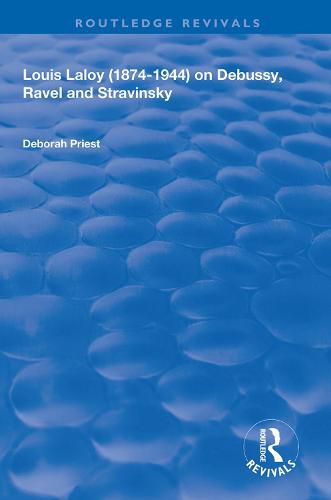Readings Newsletter
Become a Readings Member to make your shopping experience even easier.
Sign in or sign up for free!
You’re not far away from qualifying for FREE standard shipping within Australia
You’ve qualified for FREE standard shipping within Australia
The cart is loading…






First published in 1999, this is the first study of the noted French music critic and scholar Louis Laloy, and the first collection of his writings. His writings were unique in their time and have never previously been translated. Laloy’s ideas on Debussy, Ravel and Stravinsky are presented here with an introduction by Deborah Priest to each extract, placing it in the context of the period and the composer’s work. Detailed annotations explain technical and cultural references.
As a friend of all three composers, but especially of Debussy, Laloy wrote with great authority and influence: his work provides recollections, analytical insights, and insights into reception and performance practice. His erudition and wide range of reference make for fascinating and enlightening reading about the period. Deborah Priest provides a detailed introduction which sets Laloy’s work against the background of the Paris music scene from 1900- 1940.
$9.00 standard shipping within Australia
FREE standard shipping within Australia for orders over $100.00
Express & International shipping calculated at checkout
First published in 1999, this is the first study of the noted French music critic and scholar Louis Laloy, and the first collection of his writings. His writings were unique in their time and have never previously been translated. Laloy’s ideas on Debussy, Ravel and Stravinsky are presented here with an introduction by Deborah Priest to each extract, placing it in the context of the period and the composer’s work. Detailed annotations explain technical and cultural references.
As a friend of all three composers, but especially of Debussy, Laloy wrote with great authority and influence: his work provides recollections, analytical insights, and insights into reception and performance practice. His erudition and wide range of reference make for fascinating and enlightening reading about the period. Deborah Priest provides a detailed introduction which sets Laloy’s work against the background of the Paris music scene from 1900- 1940.